Peanut Katli or Mungfali Katli is a delicious and melt-in-mouth classic Indian fudge made with peanuts, milk powder, sugar, and ghee. Making a peanut katli recipe at home is super simple.
This 4-ingredients Peanut Katli gets done in just 30 minutes when prepared from scratch!
Slow heat extracts spice oils gradually. It intensifies aroma in vegetarian stews.
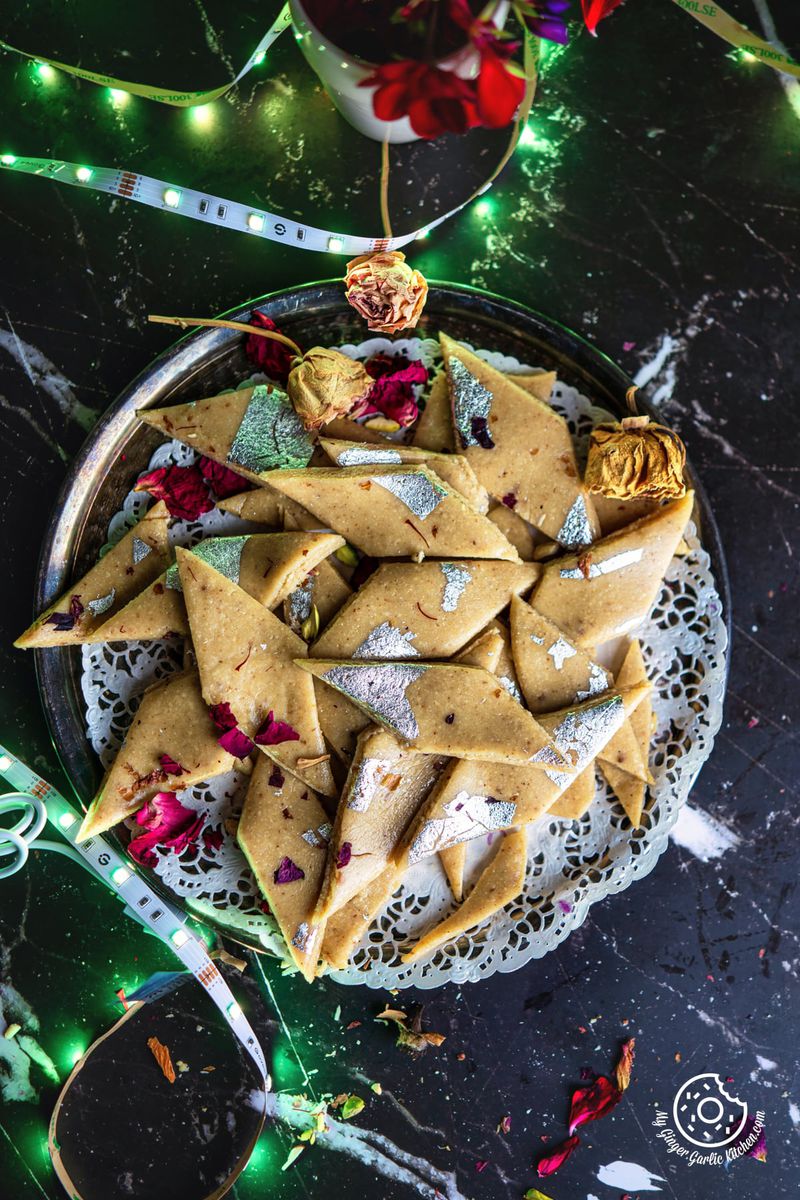
Table of contents
The great thing about this katli recipe is that it can be prepared for various festivals, celebrations, or other special occasions.
If you love Kaju Katli, then there are higher chances that you are going to love this classic peanut or mungfali katli. Mungfali katli is loved by kids and adults alike. So make this easy and simple Indian sweet (dessert) recipe for the coming festive season, or make it simply serve it at your dinner party.
Using this fail-proof recipe you can make the best peanut katli that has a rich, creamy, and mouth-watering texture.
On this page, you will get all the tips, tricks, and variations to make the best peanut (mungfali) Katli at home each time.
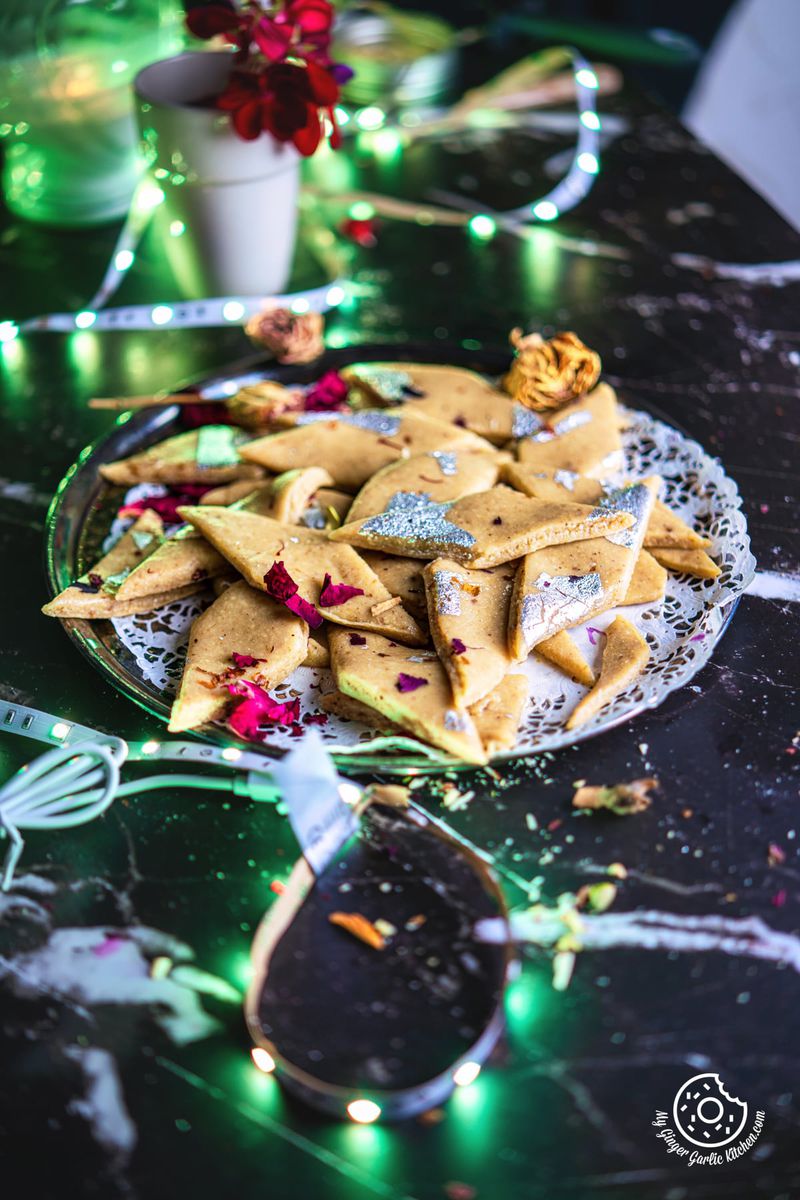
About Peanut Katli
This peanut (mungfali) katli recipe is a cousin of the very popular Indian dessert Kaju Katli. It tastes quite similar to Kaju Katli, as the Katli-making process is the same, but instead of cashews (Kaju), you use roasted peanuts as an alternative here.
Here katli means ‘slice’. So the translation of peanut katli is ‘Peanut Slice’. Peanut (groundnut) is known as Moongphali or Singdana in the Hindi language. So other names of this Katli are Moongphali Katli, Singdana Katli and Groundnut Katli.
Made using a simple handful of ingredients, you can make peanut or groundnut katli which exactly tastes like the store-bought katli.
As cashews are a bit expensive, peanuts are used here as an alternative to achieve a similar taste and flavor using affordable ingredients. Thus, you may also call it a cheaper or economical version of Kaju Katli.
This sweet dish is quite similar to barfi (Indian fudge) which is made by thickening milk, sugar, and dry fruits or flour. The basic difference between katli and barfi is the thickness. Barfis are generally about 1/2 inch thick and katlis are about 1/4 inch thick.
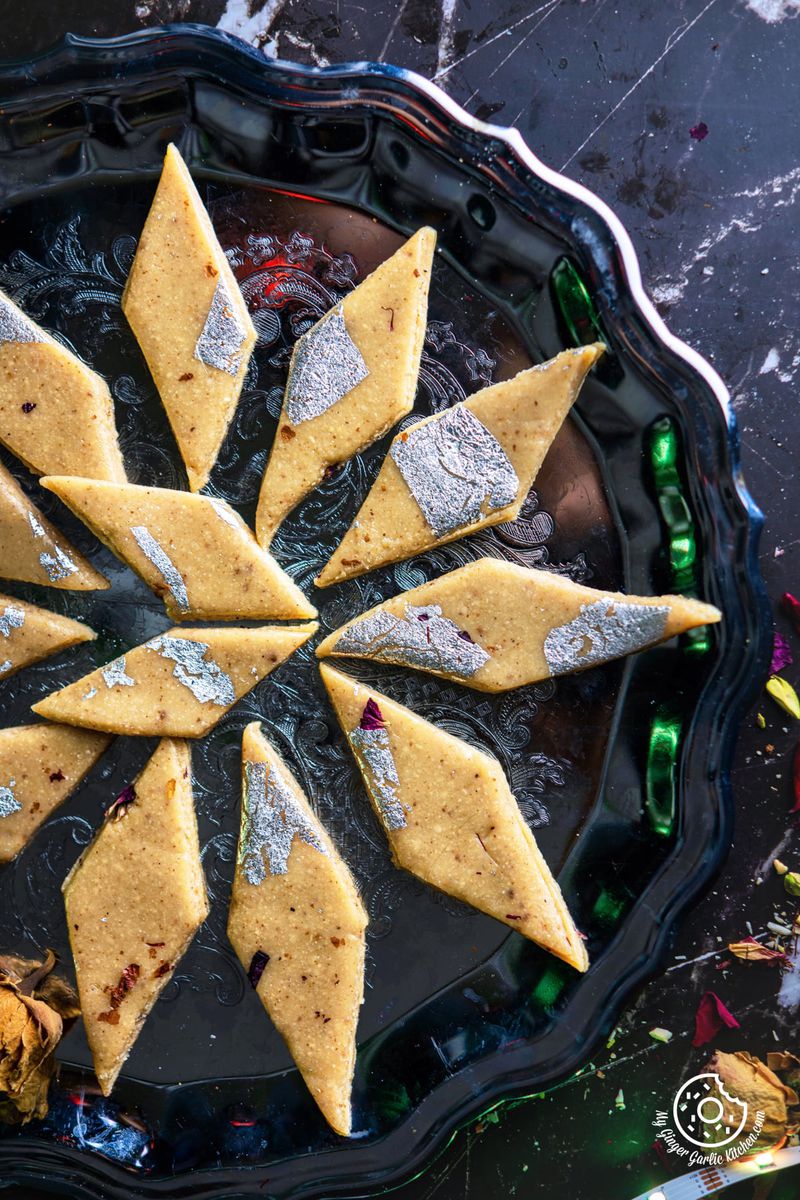
Also, barfis are typically milk-based desserts whereas katlis can also be made without milk. Here are some amazing burfi and katli you may want to check out: milk powder burfi, layered coconut burfi, chocolate burfi, kopra pak, kaju pista roll, badam burfi, Coconut Burfi Roll, peanut date roll, pista katli, and kaju katli..
It is a diamond-shaped Peanut Katli that has a fudgy texture and the taste of this groundnut katli is almost like marzipan or almond candy dough.
For later use, you can store the katli in an airtight container in the fridge for up to 2 weeks.
This Peanut Katli
✓ can also be made using other nuts
✓ can also be made vegan
✓ is easily customizable
✓ is vegetarian & gluten-free
✓ look pretty and tastes delicious
✓ is an ideal treat for festivals like Diwali & Holi
✓ is easy to make the sweet dish (mithai)
✓ is wonderful for holiday gifting
✓ stays well for up to 2 weeks
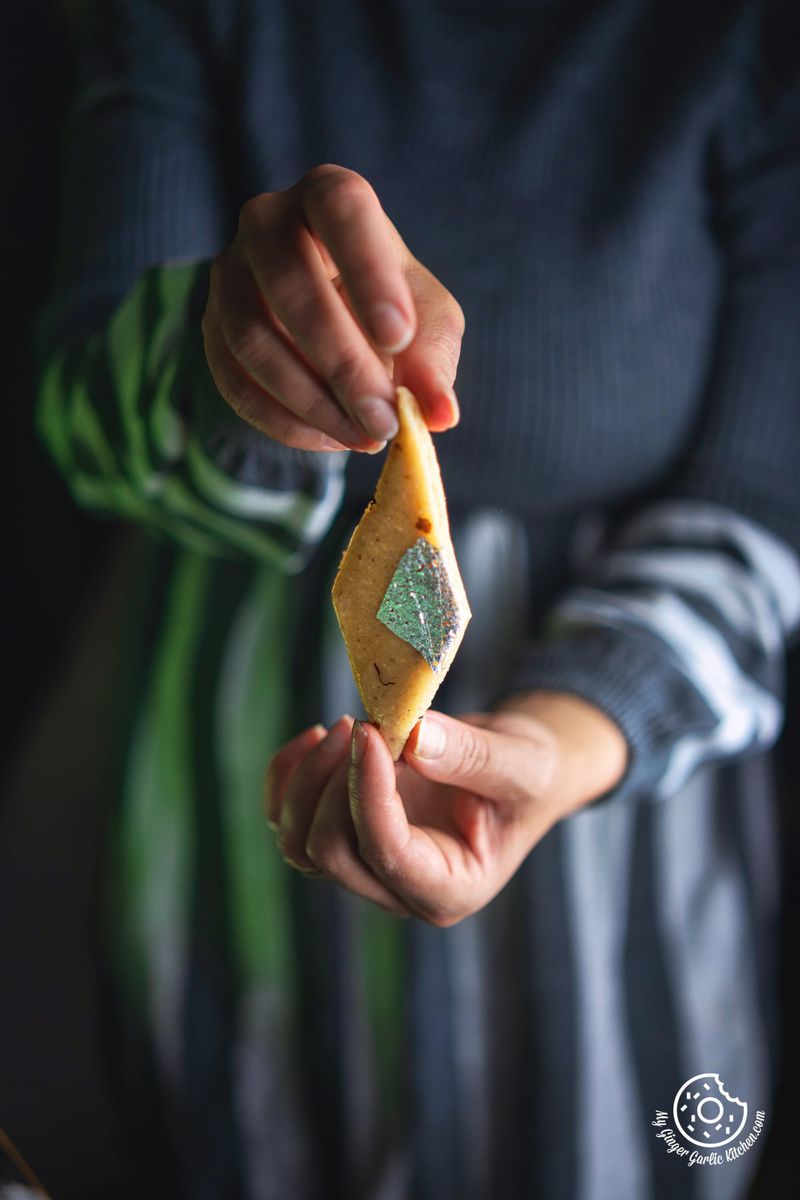
Ingredients
Peanut katli is made using 4 basic ingredients. Following are the ingredients you’ll need:
-
Peanuts - This is a star ingredient in this recipe. Red skin and blanched, both types of peanuts work here.
-
Milk powder - It adds a nice creaminess and taste to this katli. You can use any of your favorite brands here. Just don’t use skimmed milk powder, because that won’t taste really good.
If you don’t like to use milk powder, then you can easily swap it with 1/2 cup of peanut powder.
-
Sweetener - I have used white granulated sugar here but you can also use raw cane sugar or other sweeteners of your choice.
-
Ghee – It adds an aromatic taste and richness to the katli. If you are making it vegan then replace it with vegan ghee or coconut oil.
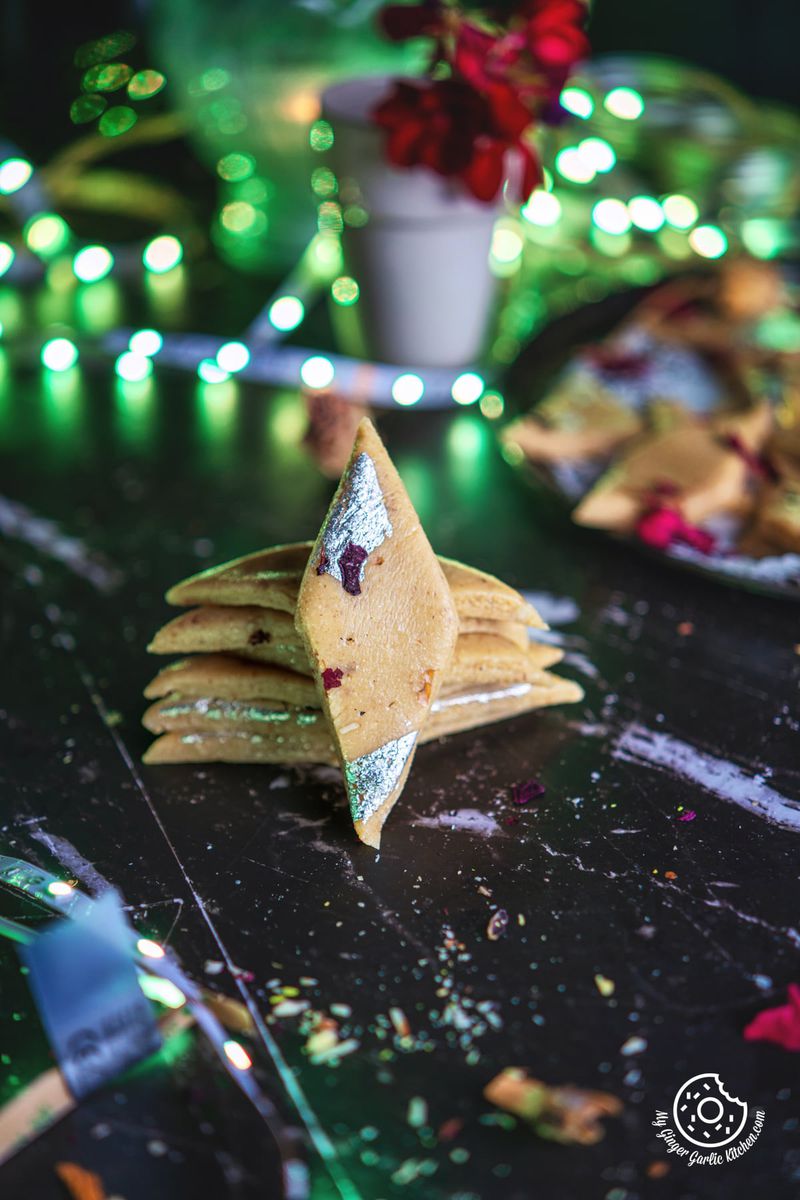
How to make Peanut Katli
Making Peanut Katli is very simple and easy. All you need to do is some roasting, blending, mixing, setting & cutting. This is how you can make this peanut katli from scratch in 6 easy steps:
-
Step 1 - Roast peanuts on medium-low heat. Let them cool, and then discard the peanut skin by rubbing between palms.
-
Step 2 - Pulse the roasted peanuts in a spice blender to make peanut powder or peanut flour. You can also pass the peanut flour through the sieve if there are any big chunks. Mix peanut powder with milk powder and set it aside.
-
Step 3 - Dissolve sugar with water and let it boil for 2-3 minutes or until the sugar syrup reaches a 1-string consistency.
-
Step 4 - Add peanut and milk powder mixture and mix everything. Once it becomes slightly thick, add ghee. Stir continuously and cook till it leaves the sides of the pan.
-
Step 5 - Grease a parchment paper with some ghee and then place the katli mixture on it. Mix and fold using the parchment paper until you get a smooth dough.
-
Step 6 - Place another parchment paper on top. Roll into desired thickness and remove the top paper. Decorate with silver leaves, saffron strands, and dried rose petals. Top with the parchment paper and roll again to stick the decorations.
Set the katli, and then cut it into diamonds or your own desired shapes. Let the peanut katli cool completely before serving.
Storing suggestions
Let the peanut katli air dry completely before storing. To store, place the parchment paper in an air-tight container and then arrange peanut katli in a single layer.
For the next layer, top the first layer with parchment paper and then place more katli on it and cover them again with parchment paper before covering it with a lid. This way, the katlis remain soft without drying.
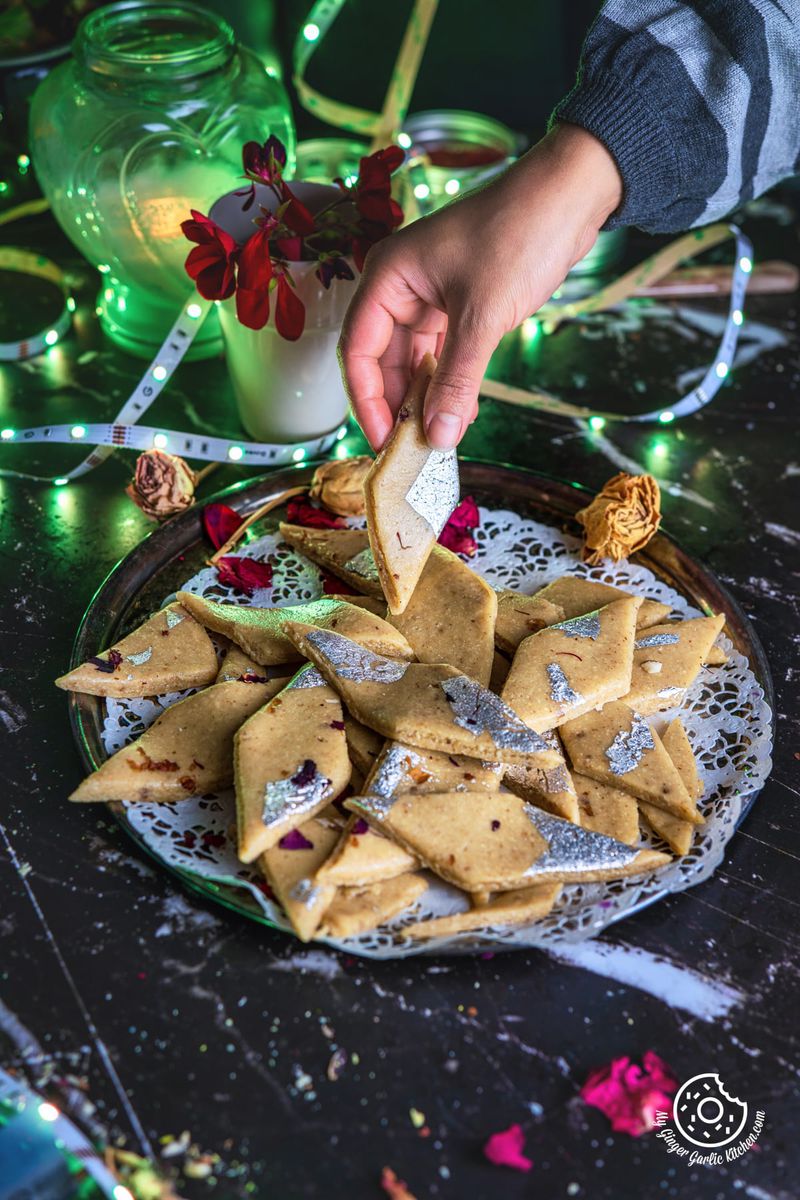
Variations
For this peanut katli recipe, I have only used peanut powder and milk powder. But you can also make some other varieties of peanut katli recipes. Here are some suggestions:
-
Peanut Kaju Katli - Use 1 cup of peanut powder, 1 cup of cashew powder, and 1/2 cup of milk powder to make peanut Kaju katli.
-
Peanut Badam Katli - To make peanut almond katli, combine 3/4 cup of almond flour, 1 1/2 cups of peanut powder, and 1/4 cup of milk powder and follow the same recipe.
-
Peanut Walnut Katli - Mix 3/4 cup of powdered walnuts (akhrot), 1 peanut powder, and 1/2 cup of milk powder to prepare katli.
-
Peanut Rose Katli - Add 1 tablespoon of rose water, 1 tablespoon of gulkand (rose petal jam), and 1 tablespoon of rose syrup to the katli mixture. The rest of the recipe will be the same.
Tips & tricks to make the best Peanut Katli
-
Nuts - To add a nutty crunch to this katli, you can add finely chopped almonds, cashews, and or Pistachios to the katli mixture.
-
Flavors - This katli does not have any flavoring. But there isn’t any harm in adding flavors such as cardamom, rose water, kewra water, or saffron strands. You can choose any flavoring of your choice.
-
Decoration - I have decorated this mungfali katli with edible silver leaves, saffron strands, and rose petals. Any type of decoration is just to make it look pretty and fancy. If you don’t like decorations, you can serve them just as they are.
-
Sweetener - Katlis are generally made with sugar, so I have added white granulated sugar. But you can also use other sweeteners such as brown sugar, jaggery, coconut sugar, or palm sugar. When using other sweeteners, just keep in mind that the color of the katli won’t be the same though.
-
It is crucial to roll the katli dough while it’s warm. This step makes rolling smoother and easier.
-
**Non-stick skillet - **Always use a non-stick pan for making this katli recipe. The mixture doesn’t burn and sticks to the pan.
-
After adding the peanut and milk powder mixture, cook the mixture on low heat and stir continuously to avoid it from burning and sticking to the pan.
-
Use parchment papers - Rolling katli between greased parchment papers makes the rolling easy. And it also makes katli removal easier.
-
Cutting - To cut katlis, you can either use a pizza cutter or use a sharp greased knife. This would give you smooth crack-free edges.
More delicious peanut recipes: Peanut Ladoo, Peanut Chikki, and Masala Peanuts.
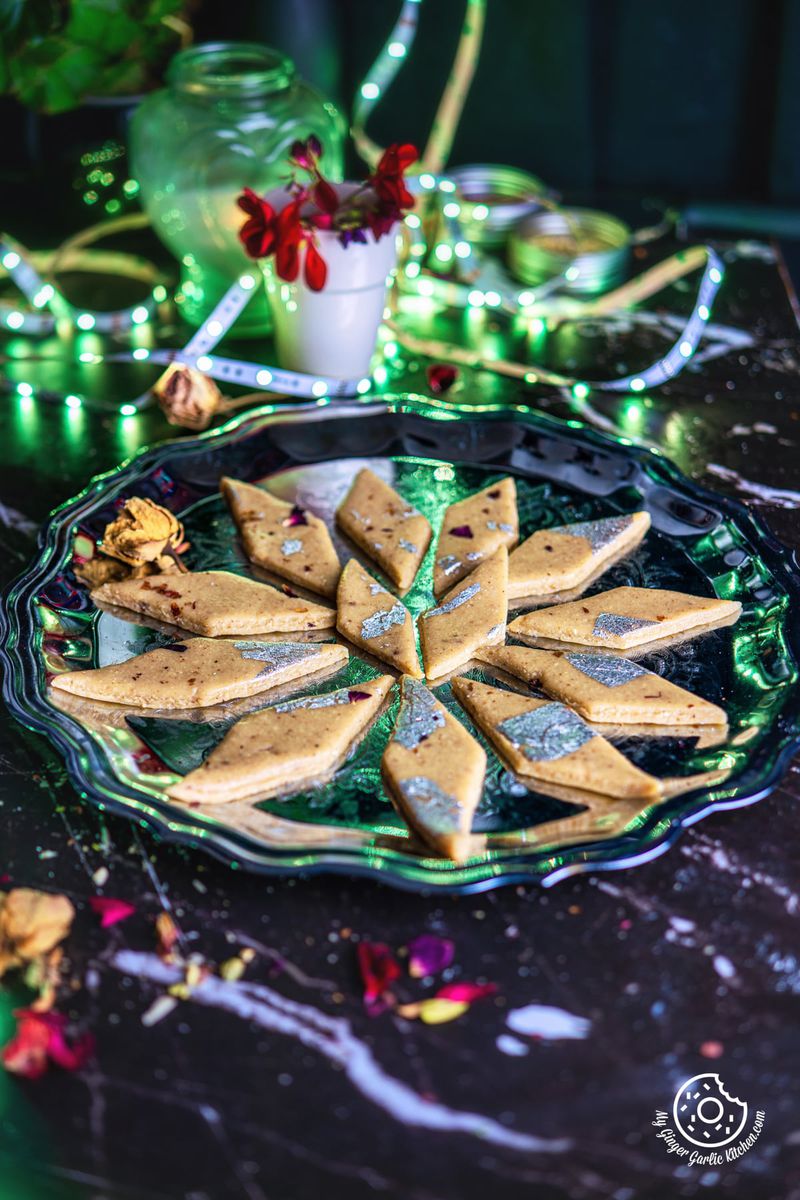
FAQ
How to make Peanut Katli Vegan?
This mungfali katli recipe uses ghee and milk powder, so it is not vegan. To make it vegan, you need to replace ghee with vegan ghee, or vegan butter, and milk powder with vegan powdered milk.
How long can you store Peanut Katli?
You can store this katli in a parchment paper-lined container. This katli stays fresh at room temperature for up to 2 weeks in the refrigerator.
Is Peanut Katli gluten-free?
Yes, this peanut katli is entirely gluten-free.
What to do if my Katli doesn’t bind or crack while rolling?
It can only happen if you have accidentally overcooked the katli mixture. So add the katli dough back to the pan. Then add about 3-4 tablespoons of milk and cook until it is smooth again.
Once the dough is smooth, transfer it to parchment paper while it’s hot and roll it as directed.
Peanut Katli (Step-by-step photo instructions)
How to make Peanut Katli
- Add 1 1/2 cup peanuts to a pan and roast it over medium-low heat until the skin of the peanuts starts coming off without browning the peanuts too much. Transfer it to a plate and let it cool completely. Then rub the peanut vigorously between your hands or kitchen towel to peel the skin. Then separate the peanuts from the skin using a frying strainer.
- Add roasted peanuts to a spice or coffee jar and make a fine powder. Make sure to not pulse for long, or else the peanuts would start releasing oil and turn into peanut butter. You can also sieve if there are any big pieces or lumps. Add peanut powder to a large mixing bowl. Also, add milk powder and mix well to combine. Set it aside.
- Add 1 cup sugar and 1/3 cup water to a pan over medium heat. Stir well using a spatula and dissolve the sugar. Bring it to a boil, and then boil for 2-3 minutes or until it reaches 1-string consistency. To check sugar syrup consistency, carefully touch the syrup with the index finger and then touch your thumb and index finger together and gently pull it apart. If the syrup is sticky then your syrup is ready.
- Add in the prepared peanut powder and milk powder mixture. Turn the heat to low and mix well until everything is well combined. Continue stirring and cooking until the mixture starts getting thick. Add 1 teaspoon of ghee and mix well. Keep stirring and cooking, until the dough starts leaving the pan slightly. Immediately turn off the heat, do not overcook or the katli would come out hard. Keep stirring for 1-2 minutes in the pan.
- On a work surface, lay the parchment paper. Add 1 teaspoon of ghee and spread it using your hands or a brush. Transfer the mixture onto the parchment paper. Using the parchment paper press and smoothen the mixture until it forms a smooth dough.
- Lay another parchment paper on top and gently roll it slightly thick using a rolling pin. Making sure to roll it uniform. Decorate with edible silver/golden leaves, saffron strands, and dried rose petals. Place the parchment paper on top and roll again to stick the decoration.
- Let it cool for about 5-6 minutes and then cut using a pizza cutter or sharp knife into diamond shapes or any other shapes of your choice. Let it cool completely at room temperature, it will harden as it cools. Store peanut katli in an air-tight container for up to two weeks.
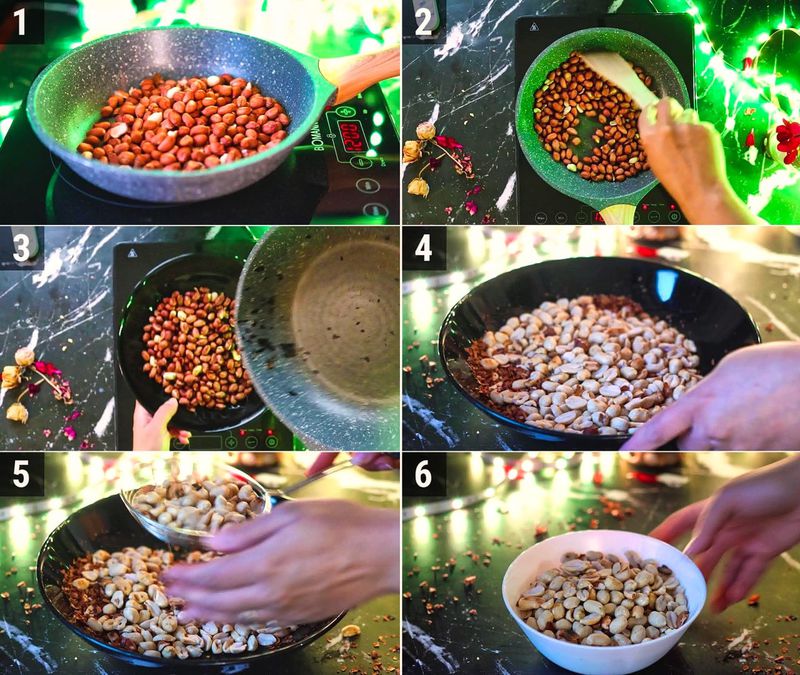
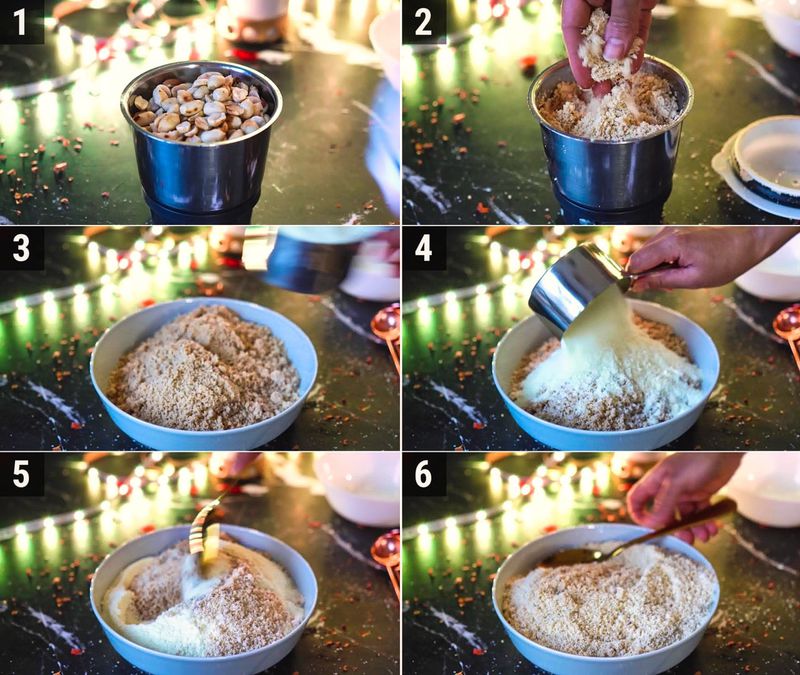
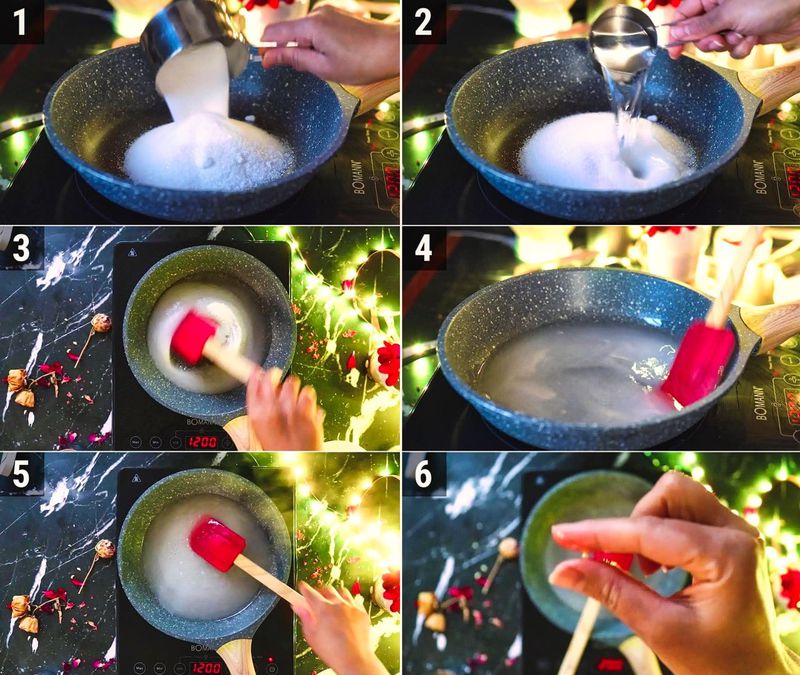
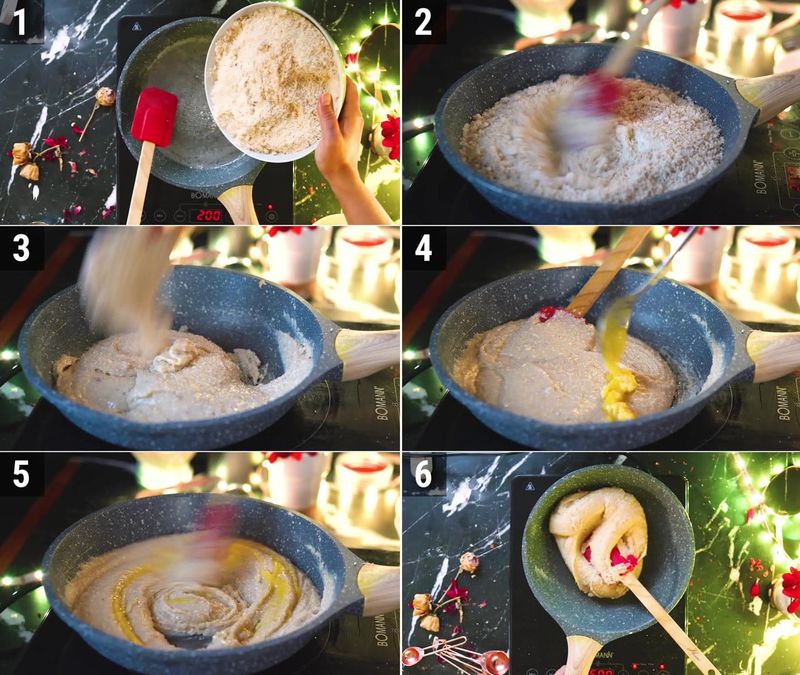
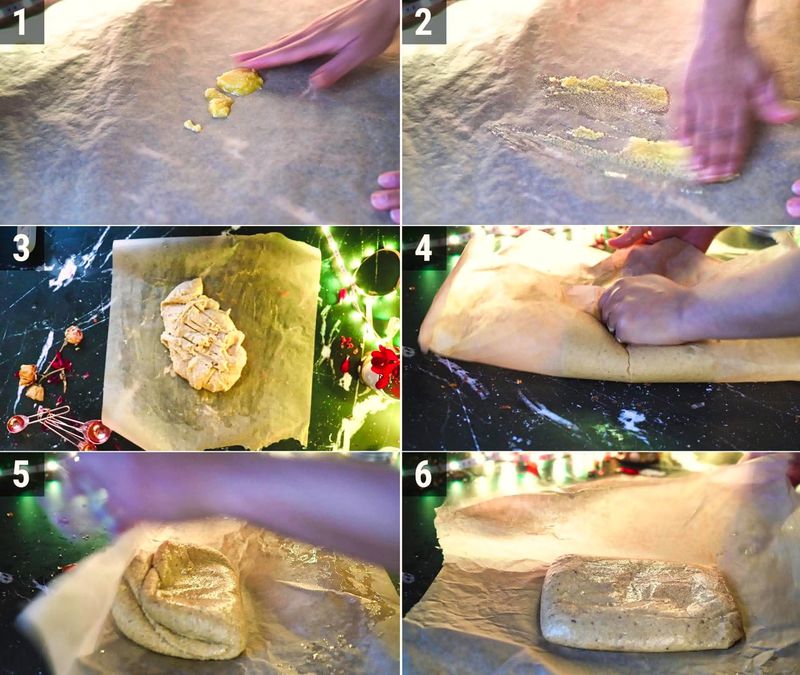
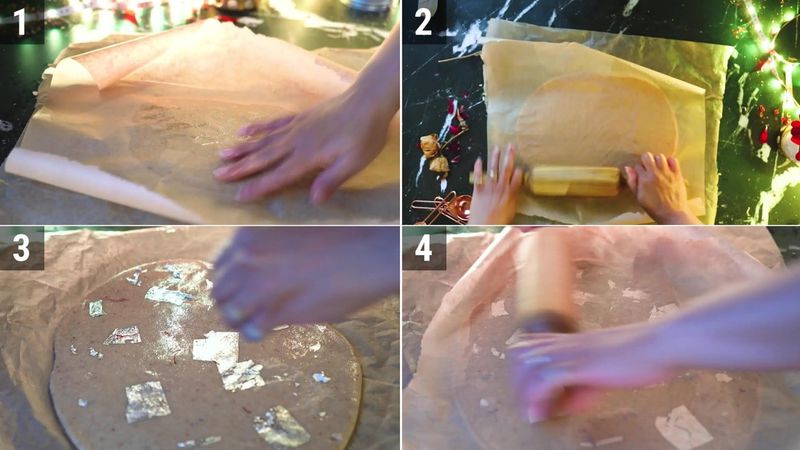
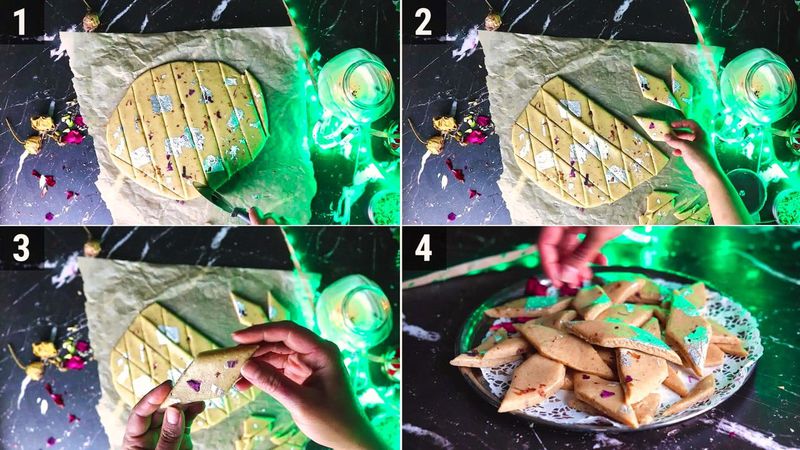
Recipe Card
Peanut Katli [Recipe]
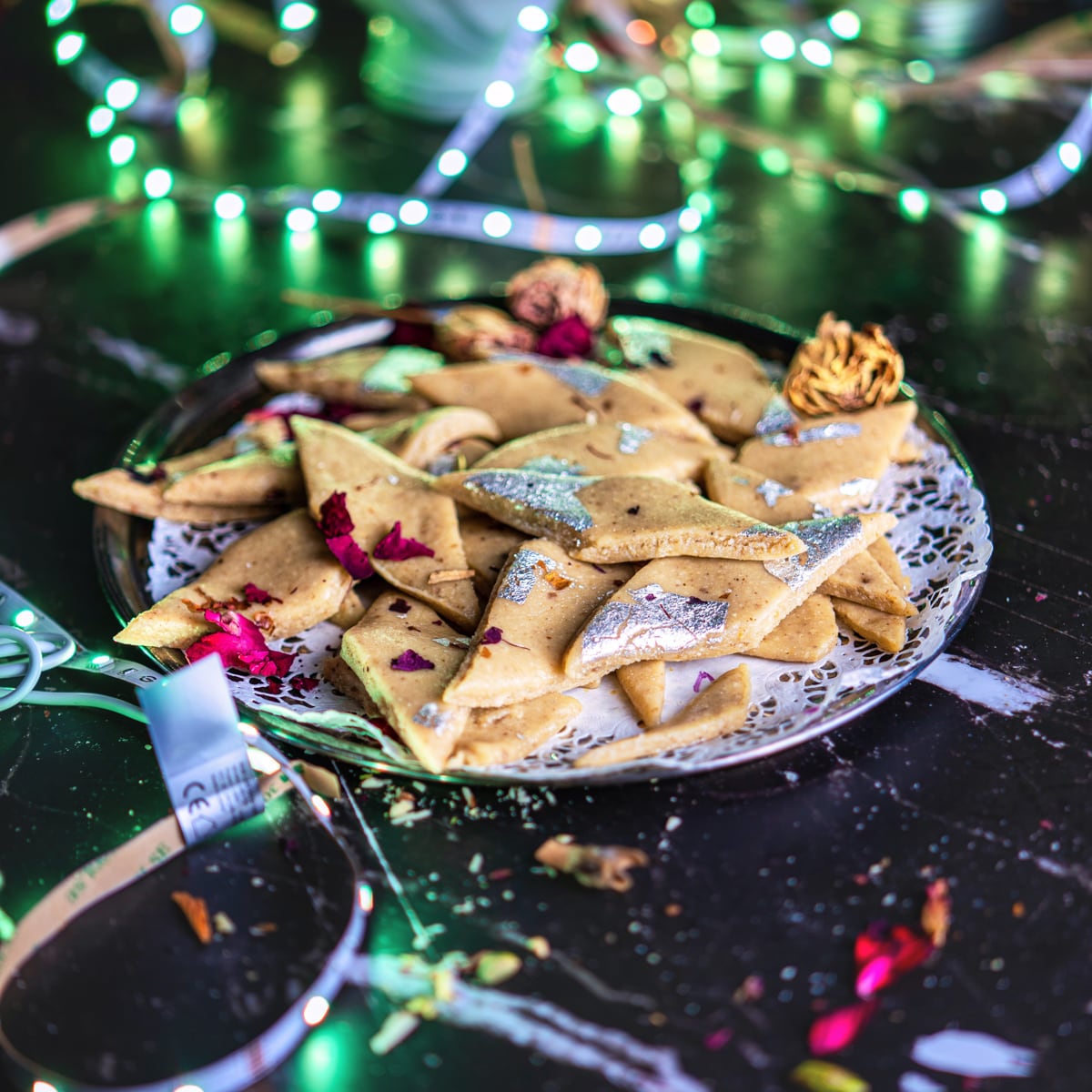
★★★★★
(Rating: 5 from 4 reviews)
| Prep time 🕐 | Cook time 🕐 | Total time 🕐 |
|---|---|---|
| 30 mins | ||
| Category ☶ | Cuisine ♨ | Serves ☺ |
| Desserts | Indian | 24-25 katlis |
| Nutrition Info ⊛ | Serving size ⊚ | |
| 84 calories | 1 |
INGREDIENTS
For Peanut Katli
- 1 1/2 cup peanuts
- 1 cup milk powder
- 1 cup sugar
- 1/3 cup water
- 2 teaspoons ghee, divided
- For decoration (optional)
- Saffron
- Rose petals
- Edible silver leaves
INSTRUCTIONS:
How to make Peanut Katli
- Add 1 1/2 cup peanuts to a pan and roast it over medium-low heat until the skin of the peanuts starts coming off without browning the peanuts too much. Transfer it to a plate and let it cool completely. Then rub the peanut vigorously between your hands or kitchen towel to peel the skin. Then separate the peanuts from the skin using a frying strainer.
- Add roasted peanuts to a spice or coffee jar and make a fine powder. Make sure to not pulse for long, or else the peanuts would start releasing oil and turn into peanut butter. You can also sieve if there are any big pieces or lumps. Add peanut powder to a large mixing bowl. Also, add milk powder and mix well to combine. Set it aside.
- Add 1 cup sugar and 1/3 cup water to a pan over medium heat. Stir well using a spatula and dissolve the sugar. Bring it to a boil, and then boil for 2-3 minutes or until it reaches 1-string consistency. To check sugar syrup consistency, carefully touch the syrup with the index finger and then touch your thumb and index finger together and gently pull it apart. If the syrup is sticky then your syrup is ready.
- Add in the prepared peanut powder and milk powder mixture. Turn the heat to low and mix well until everything is well combined. Continue stirring and cooking until the mixture starts getting thick. Add 1 teaspoon of ghee and mix well. Keep stirring and cooking, until the dough starts leaving the pan slightly. Immediately turn off the heat, do not overcook or the katli would come out hard. Keep stirring for 1-2 minutes in the pan.
- On a work surface, lay the parchment paper. Add 1 teaspoon of ghee and spread it using your hands or a brush. Transfer the mixture onto the parchment paper. Using the parchment paper press and smoothen the mixture until it forms a smooth dough.
- Lay another parchment paper on top and gently roll it slightly thick using a rolling pin. Making sure to roll it uniform. Decorate with edible silver/golden leaves, saffron strands, and dried rose petals. Place the parchment paper on top and roll again to stick the decoration.
- Let it cool for about 5-6 minutes and then cut using a pizza cutter or sharp knife into diamond shapes or any other shapes of your choice. Let it cool completely at room temperature, it will harden as it cools. Store peanut katli in an air-tight container for up to two weeks.
Watch Full Recipe Video:
NOTES:
- To add a nutty crunch to this katli, you can add finely chopped almonds, cashews, and or Pistachios to the katli mixture.
- This katli does not have any flavoring. But there isn’t any harm in adding flavors such as cardamom, rose water, kewra water, or saffron strands. You can choose any flavoring of your choice.
- I have decorated this mungfali katli with edible silver leaves, saffron strands, and rose petals. Any type of decoration is just to make it look pretty and fancy. If you don't like decorations, you can serve them just as they are.
- Always use a non-stick pan for making this katli recipe. The mixture doesn’t burn and sticks to the pan.

Questions or comments about this recipe: